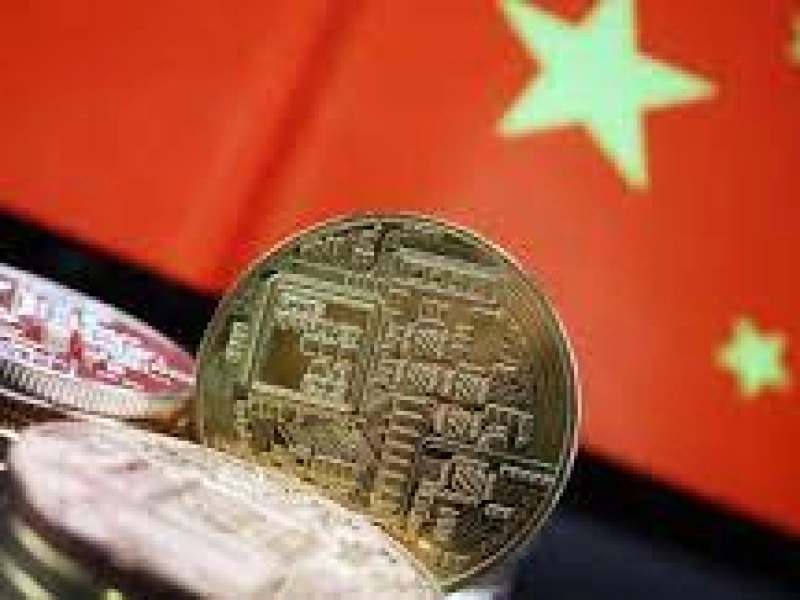Trend on Asia. Why "Chinese" cryptocurrencies showed strong growth
Hong Kong authorities' policy to legalize cryptocurrency trading is boosting demand for crypto assets with Chinese development teams and the growth of the Asian market segment as a whole
Hong Kong's top financial regulator has proposed relaxing rules that prohibit retail investors from trading cryptoassets on licensed platforms. Community participants took the news as a step towards the full legalization of cryptocurrencies and one of the reasons for the growing dominance of the Asian segment of the crypto market.
The Hong Kong Securities and Futures Commission (SFC) announced the launch of a public consultation regarding new requirements for operators of digital asset trading platforms. The agency said in an official statement that it is seeking to "strike the best balance between investor protection and market development."
There has been a long-running debate in the local parliament over an earlier ban on cryptocurrency trading for retail traders. Lawmakers continue to insist that the regulator relax the rules because local investors are moving to offshore and unregulated platforms.
Huobi became one of the first cryptocurrency exchanges to apply for a license to trade cryptocurrency in Hong Kong. The exchange's head Justin Sun announced this, adding that in addition to obtaining a license, Huobi is also planning to launch another crypto exchange in Hong Kong. According to Sun, it will aim to provide trading services to institutional investors and wealthy citizens.
"Chinese Narrative."
Justin Sun often makes high-profile statements that fit the news agenda in the cryptocurrency market. Sun announced his own artificial intelligence chatbot financial infrastructure, ChatGPT, at a time when AI-related cryptoproject token prices were at their peak. He also wrote about the launch of a "liquid stacking" service for Tron's own blockchain in late January, when tokens from the largest stacking pools were showing record price growth.
What is liquid stacking. And how to make money from it.
Sun and several other opinion leaders started talking about China and the Asian segment of the crypto market as a trigger for the global growth of crypto-assets back at the beginning of the year. But it took time and the right news background for the market to develop the so-called "China narrative," which refers to the simultaneous rise in token prices of blockchain projects with Chinese development teams.
When audiences of large Influencers on Twitter (the social network is blocked in Russia) or thematic channels in Discord and Telegram pick up on the idea that a new group of assets, united by some logic, begins to grow, the narrative materializes on its own. A large-scale interest spills over into financial injections into assets, which already drive their prices higher.
So a whole group of "Chinese" crypto-assets showed a growth of tens of percent in February. Among the major tokens from the category whose prices soared by tens of percent over the month are projects such as Conflux (CFX), Filecoin (FIL), NEO (NEO), VeChain (VET), Qtum (QTUM), AlchemyPay (ACH) and others. Less capitalized assets from the group get into the general narrative by inertia and also rise in value when traders turn their attention to them en masse in search of potential profits.
The influx of liquidity and increased demand for some of the "Chinese" assets could also have been triggered by high-profile info-promotions. An example of this was the Conflux project, whose token (CFX) has increased in value more than five times since the beginning of the year. At the end of January, the project's developers announced the integration of the token into "China's Instagram," the popular social network Xiaohongshu. Last week, Conflux partnered with a major Chinese telecom operator to create the "first SIM card on blockchain.
When news of the new policy from Hong Kong regulators broke, CFX rose more than 84% overnight and is trading at $0.31 at the time of publication, according to CoinMarketCap. Amid demand for the token, the largest cryptocurrency exchange, Binance, announced it was launching trading in perpetual CFX futures with up to 20x leverage.
Asia is breaking out in the leaders
Traders from China represent a significant share of the global cryptocurrency community, but objectively assess the extent of their influence on market trends is hampered by language barriers and the isolation of local social networks, group chats and other industry gathering points. In January, a tweet by a cryptocurrency trader nicknamed GCR, known for a series of successful multimillion-dollar deals, went viral, urging people to "check WeChat more often," implying that communities are forming in topic groups on the main Chinese social network whose activity could trigger a new stage of crypto market growth.
"Check out WeChat more often. What could bring China back to the crypto market?
The former head of BitMEX, Arthur Hayes, wrote about such a thing in his sensational essay. His idea was that legalizing crypto-asset trading in Hong Kong would be the first step in mainland China's return to the crypto market. After US regulators tightened their policies on local crypto business, executives of major US crypto exchanges openly expressed that Asia is gradually taking the lead in the development of the crypto market and the Web 3.0 sphere in general. In particular, Tyler Winklevoss, head of Gemini Exchange, partially supported the idea of Asia's influence on the industry.
Despite a formal ban on cryptocurrency and mining by Chinese authorities, natives of the country carry weight in major market niches. China remains the leading producer of mining equipment, as unanimously confirmed by industry experts, and many major exchanges have Chinese roots. Prior to the ban on cryptocurrency trading in the country, trading volumes on cryptocurrency exchanges in renminbi outpaced dollar pairs.
- Yandex added a cryptocurrency converter to search
- Japan to launch pilot testing of digital currency system in April
- Report: 24% of tokens issued in 2022 had signs of Pump & Dump schemes
- Tornado Cash developer is jailed at least until the end of April
- Bitcoin above $25K and problems of Binance. The main events of the week
- Hong Kong issues world's first tokenized green government bonds




_410x245_00e.webp)


